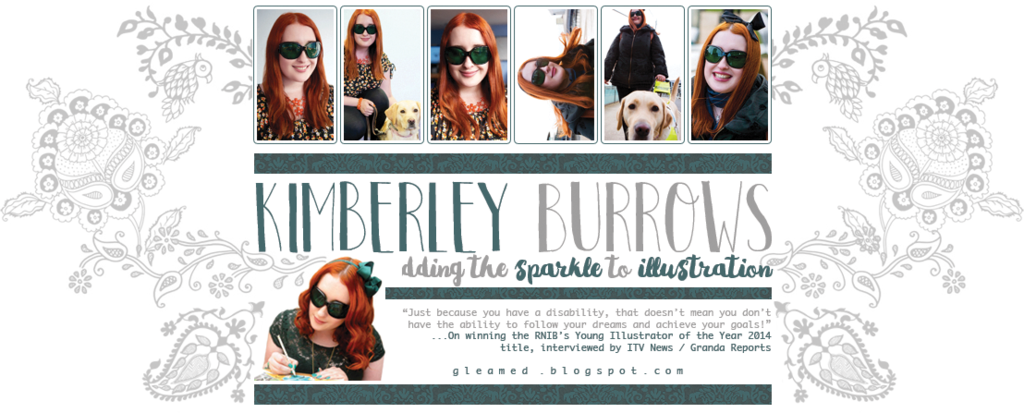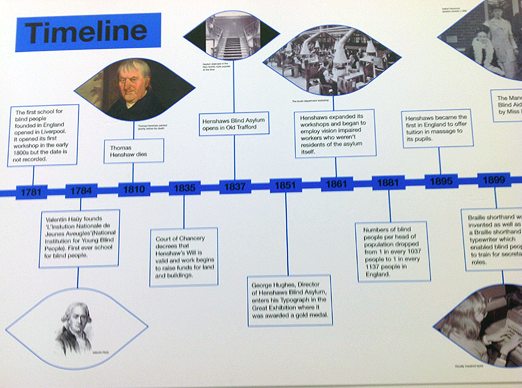The Envision steering group and I met at the RNIB headquaters in Judd Street, London, last Thursday to discuss the next steps in regards to our coffee shop campaign.
This was my first meeting as a co-chair for Envision and one of the responsibilities within my role is to help chair meetings, by; keeping track of the allocated time set for each topic, ensuring that all items on the agenda are discussed, and that everyone has had the opportunity to have their say and share their views.
I lead on welcomes and introductions, as well as 2 segments of the coffee shop campaign itself - reviewing the feedback received so far through e-mails and hard copies sent in, plus monitoring the SurveyMonkey results, followed by discussion of the VCC teleconference that I chaired recently.
We have almost 70 responses to our coffee shop survey so far which includes initial reponses from the steering group and Envision members earlier this year via mystery shopping, e-mail and hard copy versions sent in through promotion of the survey via the RNIB website, and finally through SurveyMonkey - the electronic version of the coffee shop survey.
The SurveyMonkey version can be found here and will officially close on December 12th at 5pm, allowing as much time as possible to push for any final feedback responses to build a stronger campaign voice and evidence base. If you are visually impaired and feel strongly that coffee shops should stock accessible menus and have greater staff awareness, then please feel free to fill in the form and share your views to help us compose a more accurate charter.
I provided and analysed statistics of the main areas we are looking at in coffee shops; staff awareness, easily identifiable staff and the availability of accessible menus for each of the 4 main coffee chains in the UK (Starbucks, Costa, Cafe Nero and Pret a Manger). Only in 3 instances were visually impaired customers provided with an accessible menu in the feedback we have so far, all from one particular coffee chain.
Next on the agenda that I lead on, was the recent VCC teleconference that I helped to chair. It was held during the evening of October 6th, with various visually impaired and blind campaigners located across England (which included a member from the wider network of Envision and a member of the steering group) on the call to serve as a focus group. This provided the opportunity to collect more feedback to our survey and to also generate some ideas for the development of our charter.
I discussed some of the main points raised during this teleconference, such as lighting, layout and the exterior street furniture, as well as general feedback and comments from each individual question found within the survey.
I discussed some of the main points raised during this teleconference, such as lighting, layout and the exterior street furniture, as well as general feedback and comments from each individual question found within the survey.
After breaking for lunch, the steering group and I considered the possibility of producing our findings into the form of charter to present to the industry with our evidence and key asks. We looked at the common themes and generated 5 or 6 key asks which will be developed into a first draft, conducted by myself, over the next few weeks. Through this, we also created a timeframe for the following 4 months to measure our progress which continues on into the New Year.
Key Dates
Here is a timeline of some key dates and deadlines
for Envision during the upcoming months:
Monday, 10th November 2014
for Envision during the upcoming months:
Monday, 10th November 2014
First draft of the charter to be completed,
which I'll be leading on and composing.
which I'll be leading on and composing.
Monday, 17th November 2014
Final comments from the steering group regarding the drafted charter to be sent in by this deadline. Teleconference in the evening with the entire steering group.
Monday, 1st December 2014
Charter finalised and signed off.
Monday, 5th January 2015
Identify contacts to draft meeting letters to.
January 2015 - February 2015
Identify the next campaign areas we wish to work on, and collect feedback and comments from the wider network. The shortlist can be presented in an electronic format, via SurveyMonkey, for users to vote on their preferable campaigning area. Deadline by February 2015.
The suggestion of 'coffee mornings' was brought up, to be conducted among VI groups or friends, which could be a really useful platform to gather any further key points we wish to draw up for the charter. The coffee mornings could be promoted through blind and visually impaired societies and charities, local talking newspapers and social media.
The steering group and I then generated some ideas of next year's campaign and how to canvas the views of all members within the wider network. The issue of DSA - Disabled Students' Allowances came up quite a lot and may be the leading topic that we wish to include in the shortlist to send out to the wider network to vote on and campaign for. This can be done through SurveyMonkey and sent out via e-mail and social media. Similarly, looking at the steering group for the upcoming year, we could also add a nominations section to the SurveyMonkey so that the entire network can have their say regarding their steering group members.
To conclude our meeting, we conversed about the first year of Envision (which was celebrating its first Birthday, to the exact day, on Thursday, 23rd October - a year since our Parliamentary visit and launch of the network itself) and reflected on the progress we have made so far in our campaign. Each member of the steering group shared their experience of personal development achieved over the past year thanks to Envision.
I have benefitted so much from my involvement with Envision over this past year. My confidence has grown in leaps and bounds, I'm able to address a whole room regarding statistics, quotes and research I've gathered, I've honed my organisational skills, and in particular, my social media skills; documenting each meeting and teleconference via my blog and then promoting through the Envision Facebook page and the Twitter page, which I created and regularly maintain.
I'm looking forward to my next year working with Envision and hope to witness even more progress from our network!
The suggestion of 'coffee mornings' was brought up, to be conducted among VI groups or friends, which could be a really useful platform to gather any further key points we wish to draw up for the charter. The coffee mornings could be promoted through blind and visually impaired societies and charities, local talking newspapers and social media.
The steering group and I then generated some ideas of next year's campaign and how to canvas the views of all members within the wider network. The issue of DSA - Disabled Students' Allowances came up quite a lot and may be the leading topic that we wish to include in the shortlist to send out to the wider network to vote on and campaign for. This can be done through SurveyMonkey and sent out via e-mail and social media. Similarly, looking at the steering group for the upcoming year, we could also add a nominations section to the SurveyMonkey so that the entire network can have their say regarding their steering group members.
To conclude our meeting, we conversed about the first year of Envision (which was celebrating its first Birthday, to the exact day, on Thursday, 23rd October - a year since our Parliamentary visit and launch of the network itself) and reflected on the progress we have made so far in our campaign. Each member of the steering group shared their experience of personal development achieved over the past year thanks to Envision.
I have benefitted so much from my involvement with Envision over this past year. My confidence has grown in leaps and bounds, I'm able to address a whole room regarding statistics, quotes and research I've gathered, I've honed my organisational skills, and in particular, my social media skills; documenting each meeting and teleconference via my blog and then promoting through the Envision Facebook page and the Twitter page, which I created and regularly maintain.
I'm looking forward to my next year working with Envision and hope to witness even more progress from our network!




















































